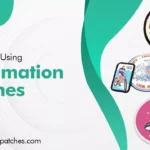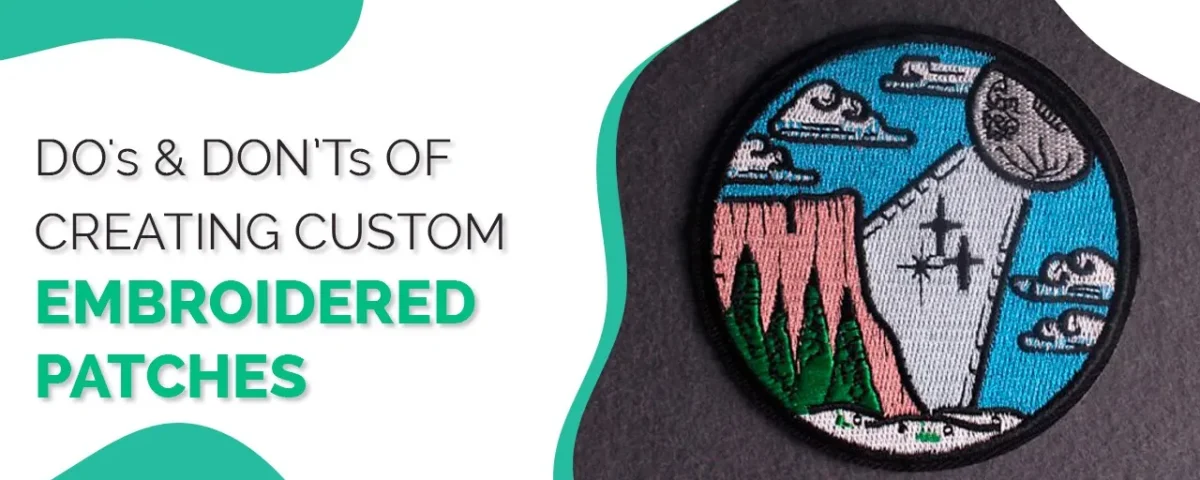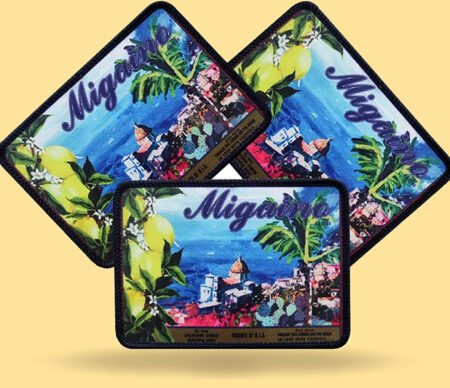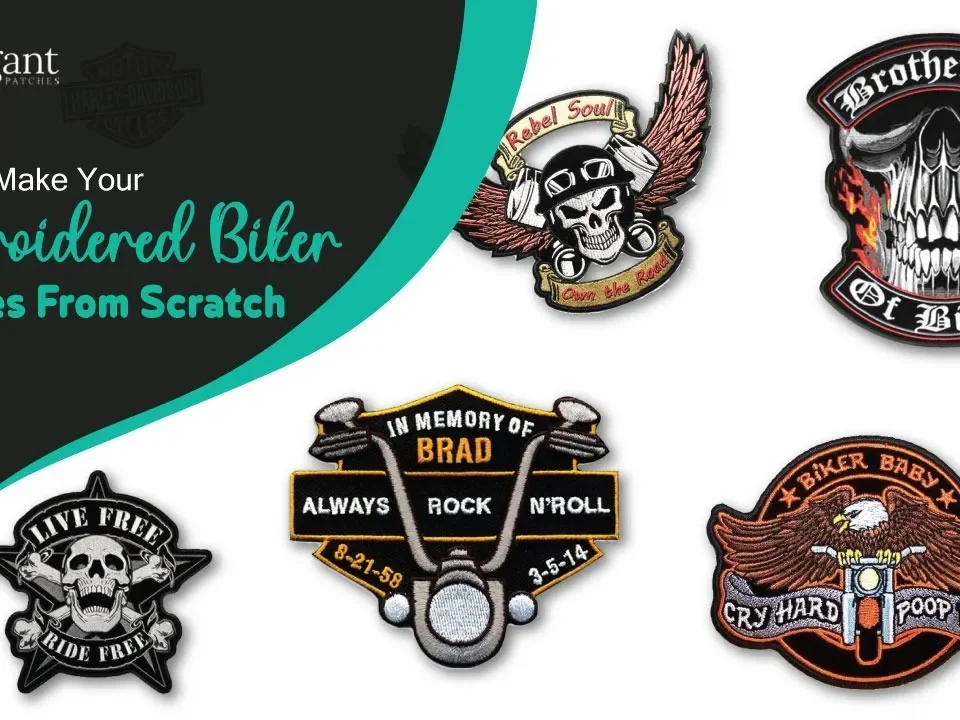
Many Uses of Versatile and Unique Leather Patches
August 5, 2024
Benefits of Using Sublimation Patches
August 5, 2024Dos & Don’ts of Creating Custom Embroidered Patches
Custom patches are always an innovative and fun idea to display your logo or artwork on clothing, bags, caps, and other accessories. These can be crafted using a variety of materials, including embroidery threads. With a vast collection of colors to choose from that can be shaped into any design, you can select embroidery patches to promote your business, club, team, band, event, and so much more in a creative and memorable form.
So, what are you waiting for? Let’s get started on designing a custom embroidered patch for your next venture!
Making Of Embroidery Patches – What To Consider
The key to a great design is to consider every element and work out the dos and don’ts of creating custom embroidered patches.
Consider the purpose of your patch. Is it to promote a new business logo at a corporate event? Is it for your sports team’s uniforms? Or is it a statement piece for a cause? These questions will better help you understand how and where the patch will be used and, therefore, what design best suits that purpose.
Here are a few tips to help you create a kickass embroidered patch:
DO – Keep It Simple
When it comes to custom embroidery patches, the lesser the colors and intricacies, the better the finished look. You may have observed that the most famous logo artwork in the world—such as Nike, KFC, Pepsi, Shell, and more—take on a simple form, the kind that a child can draw. The number of colors is limited too. This makes these logos both attractive and memorable. Minimalism is the current trend and the key to creating an eye-catching patch.
DON’T – Overdo The Design
Designing a great-looking patch is all about simplicity. Complex designs can be visually unappealing; the human eye has difficulty adjusting to art with too many design elements—colors, patterns, shapes, and dimensions. The brain cannot register too-intricate designs easily and has the tendency to lose interest when understanding does not come easy.
DO – Use A Combination Of Threads
What is it on your embroidered patch that you want to highlight? What aspect do you think is a background/supporting feature? Choose different threads to highlight the main features. Metallic threads are a fantastic way to embolden any lettering and add an appealing 3D effect to the patch. It’s best to use one metallic color per design to maintain elegance.
DON’T – Use Similar Elements
Without matching design elements to see if they complement each other, you’ll end up with an unattractive patch. Similar background and font color, a combination of identical color tones for artwork, and more than one metallic threadwork in one patch—these are all examples of a bad design. A versatile color scheme is your best friend when considering the dos and don’ts of creating custom embroidery patches.
DO – Have A Larger Font
Most custom embroidered patches include letters, numbers, and symbols defining the name of the business, team, cause, band, event, or organization. One of the benefits of using custom embroidery patches is its marketing potential—and the lettering is the aspect worth detailing in a prominent, easy-to-read way. Ideally, the font should take up at least 60% of the space on an embroidered patch. Also, when creating a custom design, make sure to choose a contrasting color or depth for the font.
DON’T – Choose Thin/Small Lettering
One of the biggest mistakes in the dos and don’ts of creating custom embroidered patches is ignoring the font. Sure, the shapes, patterns, and drawings are what make a patch striking and unique, but do you expect people to know what the patch is all about if they can’t decipher the lettering? Not only that, but delicate lettering has the tendency to disappear into the background design over time; thin threadwork can become broken from wear and tear.
DO – Consider Bigger Sizes
When it comes to designing custom patches, bigger is better. The more space you have to work with, the more creative your design can be. Plus, you need room to fit both drawings and letterings in a sensible, readable way—which can only be possible when the patch size is medium and over.
DON’T – Fit Design In < 2 Inch Patch.
Small patch sizes lead to visually compromising design. While you can choose a patch size as small as 1 inch in width and height, we advise against it. Not only are smaller patches difficult when it comes to fitting the design in an understandable way, but these also tend to disappear when attached to any apparel.
DO – Add A Suitable Border
Borders are beneficial for any art—these shape the main design to stand out on any background. For patches, thick borders (at least 2-3mm thick) work best. These borders can be added to any shape, giving it a piped, finished look. Plus, borders are a great way to add some protection to the inner parts of an embroidered patch, keeping the design from fraying quickly.
DON’T – Ignore A Proper Edge
Un-bordered patches are not as durable as the ones with a nice laser-cut or over-locked edge. Even high-quality threads get a tad messed up after multiple wash and dry cycles—which is why adding a border to your custom patch design is imperative for the longevity of artwork and thread integrity. Plus, a patch without a border can blend into the background when attached to a similar shade of fabric, so make sure to add this detail to your nest order of custom patches.
Done Creating A Design?
The next step is transforming your artwork into a stunning patch at Elegant Patches!
Our team is set and ready to create a personalized embroidered patch precisely as you want. We can help you perfect your custom embroidery patch design using our state-of-the-art embroidery digitizing process. If you have any queries related to any of our custom patch services, we’re more than happy to guide you.
Reach out to us today for a free quote.




